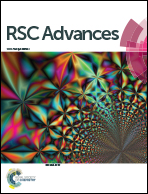Impact of aluminium addition on the corrosion behaviour of Sn–1.0Ag–0.5Cu lead-free solder
Abstract
The effect of Al on the corrosion resistance behaviour of Pb-free Sn–1.0Ag–0.5Cu–xAl solder (x = 0.2 wt%, 0.5 wt% and 1.0 wt%) in 5% NaCl solution was investigated by using potentiodynamic polarization and salt spray exposure. Passivation behaviour was evident in all the solder formulations containing Al, compared to the base SAC solder. FESEM and XRD results revealed that more dense passive films were formed on the solder containing Al, compared to the base solder. These passivation films contained intermetallic compounds such as Al2O3, AlCuO4, SnO and SnO2 served to prevent further reaction on the material surface. Polarization studies showed that the corrosion rate was 30% and 6% lower for alloys with 0.5 wt% and 0.2 wt% Al content, respectively, even though the corrosion potential shifted towards more negative values. The Al-added solder alloys exhibit more refined surface after exposure in the salt spray chamber and revealed no visible infiltration of aggressive ions at the solder–substrate joint. This work suggests a corrosion mitigation strategy for SAC 105 solder through doping of Al.


 Please wait while we load your content...
Please wait while we load your content...